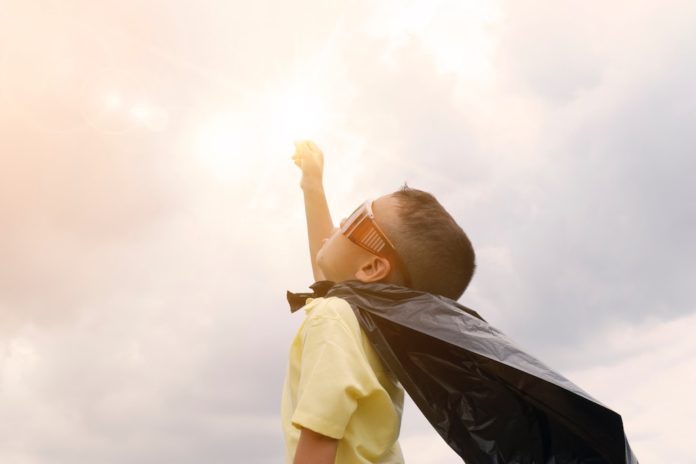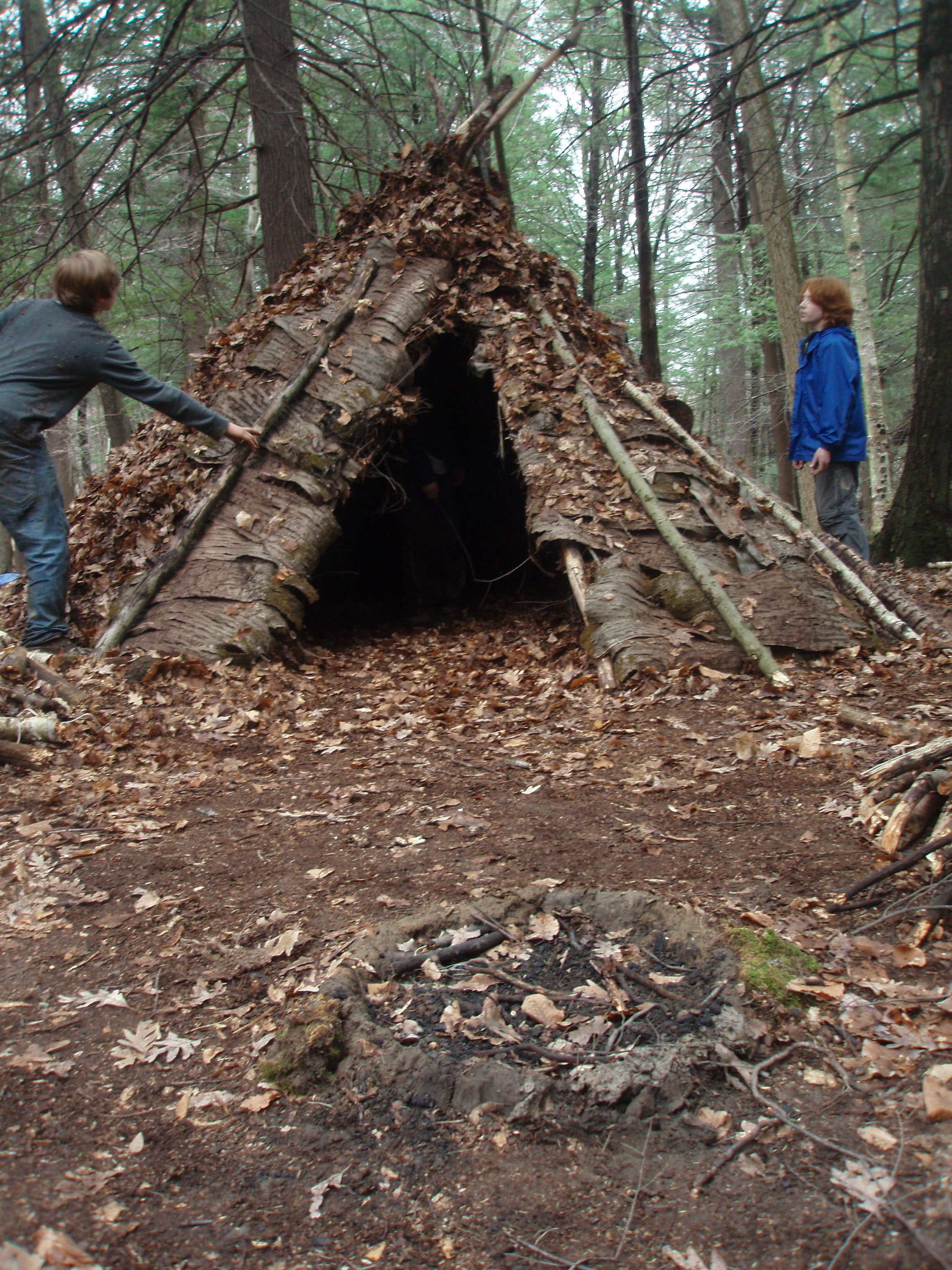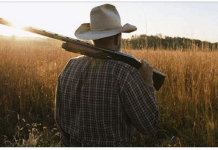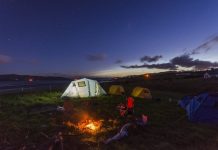Unfortunately, though we may joke about wanting to do it, we know we can’t wrap our kids in bubble wrap to keep them safe. Not only is it impossible but it’s not healthy. They have to experience the world on their own in order to learn to become truly independent. And the reality is that as they get older we can’t always be there to protect them. So, the next best thing is to teach our kids how to protect themselves.
When it comes to how to explain emergencies, disasters, and prepping to kids; parents must walk a fine line. Tell your kids that sometimes bad things happen and although we can’t always stop bad things from happening, there are things we can do to protect ourselves and to get ready to react to those bad things when they happen.
If you explain too much to a child that isn’t ready, you can actually do more harm than good by creating extreme anxiety in your child. The goal isn’t to make your child afraid of the world. But if you don’t explain anything your child could be caught in a situation that they are ill prepared for and may cost them their life. So how do you balance everything? How do you explain these things to your children so they can protect themselves without turning them into a basket case of nerves worrying about every little thing that could go wrong?
Evaluate Your Own Behavior in a Crisis
Think about how you respond on a daily basis to things that go wrong:
- Are you terrified of spiders, snakes, dogs, loud noises, heights, etc.?
- Are you frightened by extreme weather like tornadoes, earthquakes, or hurricanes?
- Do you get angry and cuss or throw things when something breaks?
- Do you blame others when things go wrong or do you take responsibility and figure out how to set things right?
- Are you afraid of thunderstorms and lightning or do you sit in a chair on the porch and watch the awesome power of mother nature?
- Do you have a plan in place so that you can act quickly and with confidence when something happens or do you plan to call 911 and wait to be rescued?
- When a natural disaster or storm is predicted; do you run around in a panic trying to collect flashlights, batteries, cell phones, etc. or is everything organized and ready to go?
- When you or a loved one gets hurt, do you panic, cry, or rush to the emergency room or do you have a comprehensive first aid kit on hand that you can pull out to handle most types of injuries calmly and confidently?
- Do you follow basic safety rules when driving, walking at night, visiting an unfamiliar area, boating, etc.?
Reflect on your own childhood and the things that you were afraid of back then. Were any of those fears things that you know your parents were also afraid of? Were any of your fears based on a negative experience YOU had or were they based on the fact that you learned to be afraid because your parent or someone else was afraid?
Think about how you respond when something bad happens and make sure that the behavior your child sees from you is the way you’d want them to behave in a crisis. You’ll see why your own response to crisis is so crucial to explaining eveything to kids in the next section.
Be a Good Role Model for Preparedness Behavior
If you’ve ever experienced your toddler using your favorite cuss word in the correct context, you’ve seen behavior role modeling at its finest. Children mimic what they see and hear, especially when they are very young. Your child learned to eat, walk, and talk and yes even cuss by watching you and others they spend time with often.


My three-year-old grandson used the big MF word this summer and his mother was mortified but then she said “oh, that’s me all day long!” She took steps to correct her use of foul language and it hasn’t been an issue with her son since. It’s quite the eye opener for parents to realize their child listens and copies everything they do, even when you think they aren’t paying attention to you.
When kids are very little, they are like knowledge sponges. They soak in everything they see, hear, touch, and feel. This is their main method of learning new skills. In fact, many experts believe that a child’s development from infancy to age five years old is the most crucial time of their life. Their brains are developing in such a way that they are able to soak up almost unlimited knowledge. This could be the reason for the popular saying “Everything I need to know about life, I learned in kindergarten”.
You can teach kids about emergencies and being prepared at a very young age simply by modeling the preparedness behavior you want them to have. The first step is to evaluate your own behavior. If your child sees you acting afraid of extreme weather events; they will likely mimic that fear. But if your child sees you acting calm as you prepare for expected bad weather, they will adopt your attitude about extreme weather.
When you’re getting ready to start the day, talk to your young child about how you make decisions. Talk about what the weather is like and how that helps to determine what kind of clothing you will wear for the day.
For example, saying something simple to your young child like:
“It’s hot out today, we’re going to wear shorts so we can stay cool but we’ll need to remember our sunscreen so we don’t get burned.”
Or
“The sky is getting dark and the weather man says there is a storm coming. Let’s bring all your toys and bike into the garage now just in case it gets windy.”
There are a thousand of these types of examples. If you consciously talk to your kids on a daily basis in this way, they will learn to pay attention to weather, to dress appropriately and prepare for what is likely to happen.
Having a routine at home and a designated place for things also makes it easier for kids to be prepared. If you have kids who are elementary age or older, have them lay out their clothes and everything they will need for school the night before.
In our house, the rule is you have to take a jacket even if you don’t want to wear it because it’s better to have it and not need it then need it and not have it. When you notice changes in the weather, point them out to your child so they can get in the habit of noticing these things too.
If kids ask questions about your EDC items, tell them honestly what you carry and how it can help in everyday emergencies or bigger situations. Let them begin to “copy” your EDC items first with pretend tools when they are very young. Gradually transition them to actual functioning items but make sure they are age appropriate and you give your child proper instruction and practice.
A flashlight or headlamp is a good item as long as the batteries are secure and can’t be swallowed accidentally. An emergency whistle, bandana, a paracord bracelet, etc. are all great items to start out with for kids. As they get older, consider items such as the Dragonfly Wooden Knife by Spyderco or Kuhn Rikon Kinderkitchen Dog Knife with Teeth which comes with a great guide on how to handle and use the knife. Knives aren’t allowed in school of course but your kids can put together their own EDC for school which could be made up of items they will need throughout the day such as tissues, extra pencils, extra lunch money, etc.
Know Your Child
One of the most important factors in how to explain emergencies, disasters, and prepping to kids is to know your child. Every child is different. Some kids can handle hearing about a tornado in a nearby town whereas other kids will become anxious or overly worried or afraid that it will happen to them. Find out what your child already knows about a specific type of disaster, emergency, or prepping skill before you start giving them information.
Letting your child tell you what they already know about a topic gives you an idea of where to start with your explanation and if you need to correct any inaccurate information they may have heard from friends, school, or television, etc.
An understanding of the cognitive development of children can give you an idea of what they might be ready to handle at different ages. Generally, babies up to about two years of age are in the Sensorimotor stage and they learn best by using their senses and touching and playing with objects. Memory and imagination develop in the Preoperational stage from about age two through age seven years.
Children begin to realize past and future and understand things symbolically. Starting at about five years old kids should develop better attention, increased memory and problem-solving skills. They are able to work towards goals and make connections between one or more ideas.
Kids from seven to eleven years of age are in the Concrete Operational Stage. This is where they will begin to notice events outside of themselves and start to recognize and feel compassion for the feelings of people other than themselves. From age eleven on is the Formal Operational Stage. Children learn to use logic to accomplish things, solve problems, and plan for future events.
The above stages are guidelines and further research will give more insight into exactly which tasks fall under each category. But keep in mind that you know your child best. Try to stick to one or two new topics at a time until your child has mastered those. Make the topics something your child is interested in and something that is directly relevant for your area.
Provide Reassurance for Your Child
If you live in an area that frequently experiences disasters such as tornadoes, flooding, or hurricanes, etc. talk to your kids about how these things happen and what the family plan is for safety. When explaining things to your child, emphasize ways to protect themselves. If you pay attention to your child, you’ll see clues that will indicate whether they are ready for more responsibility or if the information you’re providing is beginning to overwhelm them.
If you get a sense that your child is overly worried about their safety or the safety of others, reassure them that being prepared is a good way to help them stay safe. Point out things that have been done to your home for example that make it stronger and able to better withstand a storm or other disaster or remind your child of the food, water, and other supplies you’ve stockpiled which will help you to hunker down and stay safe through a disaster, etc.
Explain Emergencies, Disasters, and Prepping to Kids by Emphasizing Safety
Another way to explain prepping to kids is to simply emphasize safety. Prepping is really all about safety in the end. Most parents already teach safety on a regular basis without even realizing it.
Think about some of the safety actions you already teach your kids such as:
- Look both ways before crossing the street to avoid getting hit by a car
- Don’t talk to strangers without mom or dad present to avoid getting kidnapped
- Obey the traffic laws while driving; no texting or drinking while driving to avoid accidents
- Buckle their seat belt in order to be safer in the car
- Wear tennis shoes and a helmet when riding a bike
- To run away if a stranger approaches them on their way to or from school
- Wear a lifejacket during boating activities.
Here are some of the safety things I emphasize with my own kids and grandkids:
From the time they were little, I’ve pointed out different houses on our street that my kids can go to if they ever need any help from an adult when I’m not with them. These are the families I’ve known myself for many years and I would point out the houses every time we drove by them on our way to or from somewhere else even before my kids were old enough to leave the yard alone. If my kids are in trouble in our neighborhood when I’m not with them, I know they will react by running to the “safe” house that is nearest rather than to a stranger’s house.
When we go on an outing together as a family, whether it’s to a fair, festival, school football game, the zoo, or an amusement park, I remind my kids and grandkids before we go in that if they get separated from me they should go to the nearest person working there. I point out what the staff people are wearing (see those people with the bright orange shirts, logo, behind the counter, etc.).
If you are lost, go to the closest staff person, tell them your name and my name and that you are lost. As kids get old enough you can simply choose a meeting place you know they can find on their own such as the tallest ride or the information booth at the fair, etc. If the worst happens and they are separated they make a beeline for that spot and wait because they know you will come there to get them. Even with the prevalence of cell phones, a meeting spot is a good idea in case your child’s cell phone dies or is broken and they can’t call you.
So emphasize the safety measures and have a plan of action for events such as:
- If they smell smoke in the house at night
- If they are home alone and someone knocks on the door or tries to get inside
- If the phone rings when they are home alone
- If they are chased by a dog
- If a car pulls up near the front yard and someone motions them to come closer
If you’ve taught your kids safety procedures for the above things, then it will seem perfectly logical to have safety plans for:
- Power outages
- Storms and other Natural Disasters
- Flooding in the house
- Downed power lines
- SHTF
Let Them Help with Routine Preparations and Home Maintenance
Another way to explain emergencies, disasters, and prepping to kids is to let them help on a daily basis with routine preparations and home maintenance. If you’re baking bread or canning food, let your kids help with the tasks that are appropriate for their age.
As you work, explain what you are doing and why it’s important or how it helps keep things running smoothly or will protect you when bad things happen. Some of the preparations and home maintenance kids can help with include:
- Feeding and caring for animals and livestock
- Gathering eggs from the chickens or helping to dispatch them for the freezer
- Cooking breakfast using different methods (campfire, propane stove, solar oven)
- Restocking the first aid kit for the house and car
- Inventory of food, water, and other supplies in your stockpile
- Checking to make sure doors and windows are locked at night
- Gathering firewood and building a fire when camping
- Putting up a tent in the backyard or while camping
- Topping off essential fluids in the car (gas, oil, power steering fluid, etc.)
- Filling water bricks or other containers to stockpile water
- Rotating food supplies in the pantry or other storage area
- Testing smoke detectors to make sure they are working
- Cleaning firearms
- Packing for a trip whether camping, vacation, or bug out
- Finding the way back from a hike or other “adventure” in the woods
- Plan your vacation route or the next trip to Disney
Wrap-Up
The bottom line is the best way to explain emergencies, disasters, and prepping to kids is to let your kids share in the experience as you are making preparations and plans for different events. Give as much information as your child can handle for their age and maturity level, let them ask questions, and try not to overwhelm them with too much information at once.
If you emphasize safety, have patience and make being prepared just another part of what they need to learn as they grow, your kids will learn the skills that are essential to keeping them safe. Kids are amazingly resourceful too, so you may just learn some new ways to do things too!






















